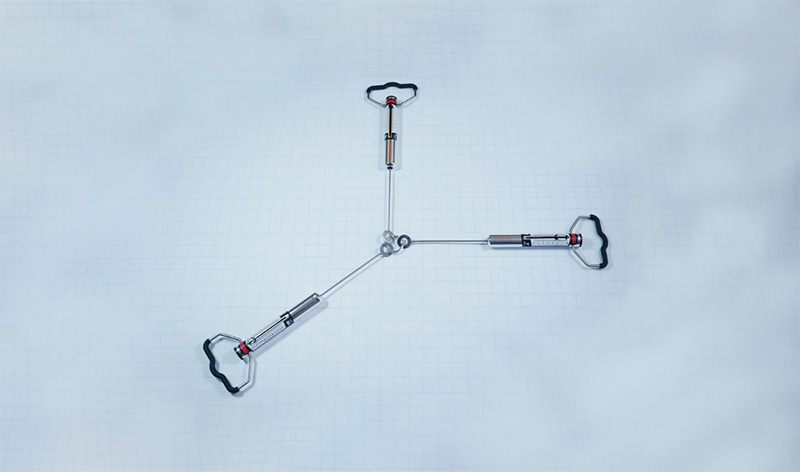Activity Overview
In this activity, students investigate equilibrium of a point (a small metal ring) under the action of forces from 1, 2, 3 or 4 spring scales. They will find that the vector sum of the forces at a point must add to zero for it to remain in equilibrium.

Learning Objectives
By the end of the activity, students should be able to:
- Read the force in a spring scale
- Trace the line of action of spring scale forces on a large sheet of paper
- Convert those lines of action into vectors and add them graphically (or algebraically, if given supplementary instruction)
- Demonstrate that a single, non-zero force cannot act at a point
- Show that if 2 forces act they must be equal and opposite
- Illustrate by example, that if 2 or more forces act at a point, their vector sum must be zero
- Demonstrate how the force in a single, angled spring scale can be experimentally resolved into its x and y components
- Give an example of a measurement that contains experimental error
- Discuss how contracts can facilitate attainment of collective goals
And, if the Contract was used,
Tips for Using the Activity
Students should be encouraged to enjoy the Activity.
They should not be rushed or under pressure to obtain the “correct answer” or a high grade.
Instead, they should be encouraged to explore, and figure out how forces at a point must interact for equilibrium to exist.
Equipment Design
The equipment was designed to be simple and intuitive to operate, informative to the students, and durable.
Additional Information
See the Downloadables section for more information on this activity.